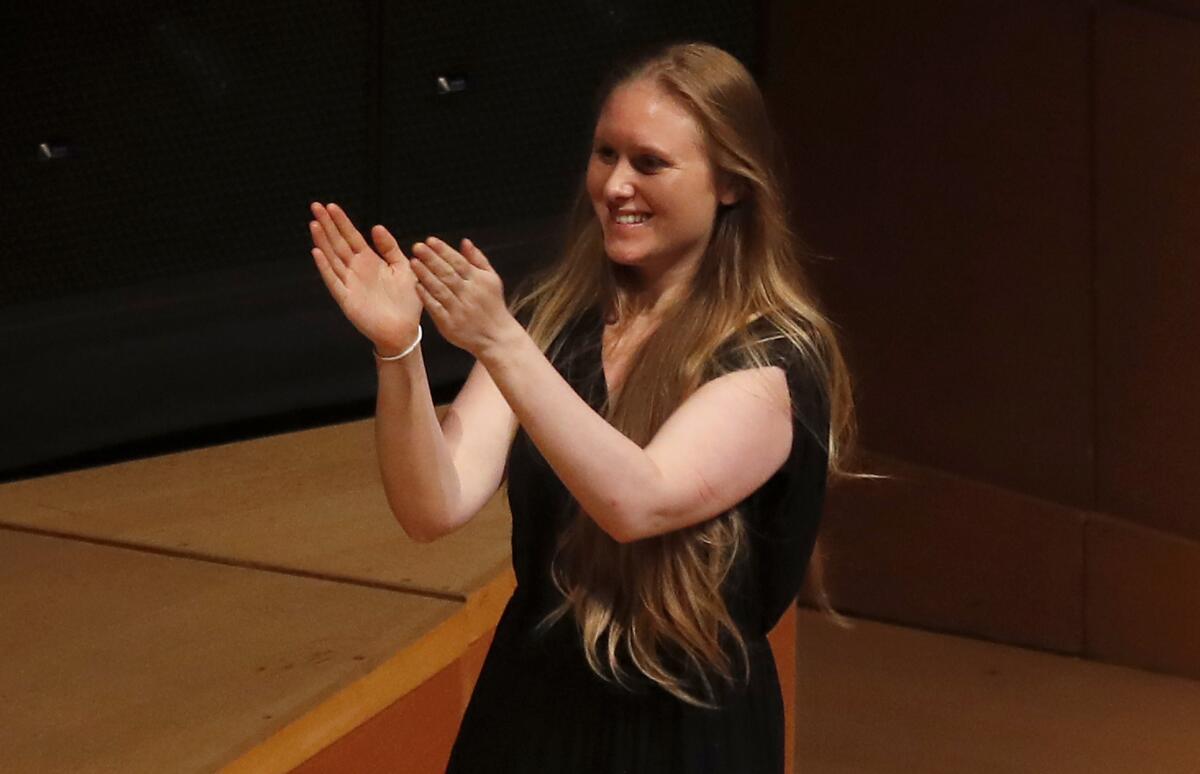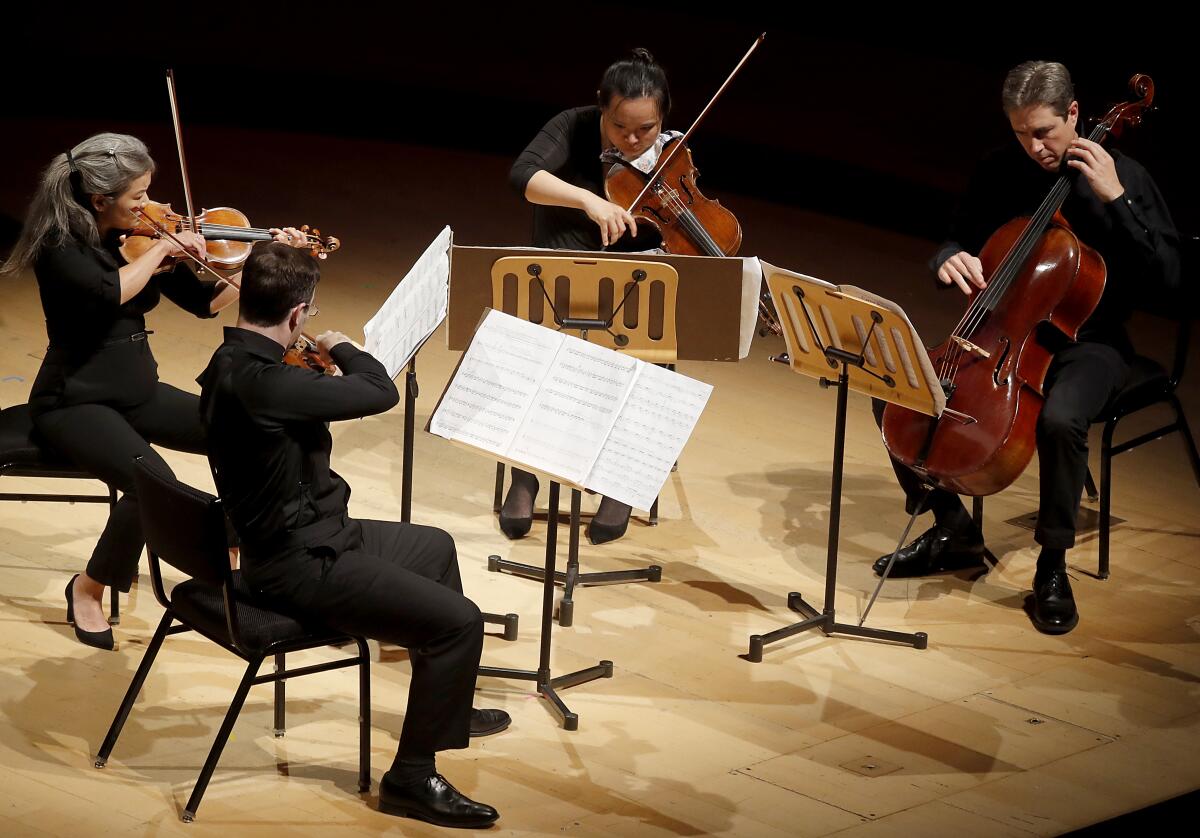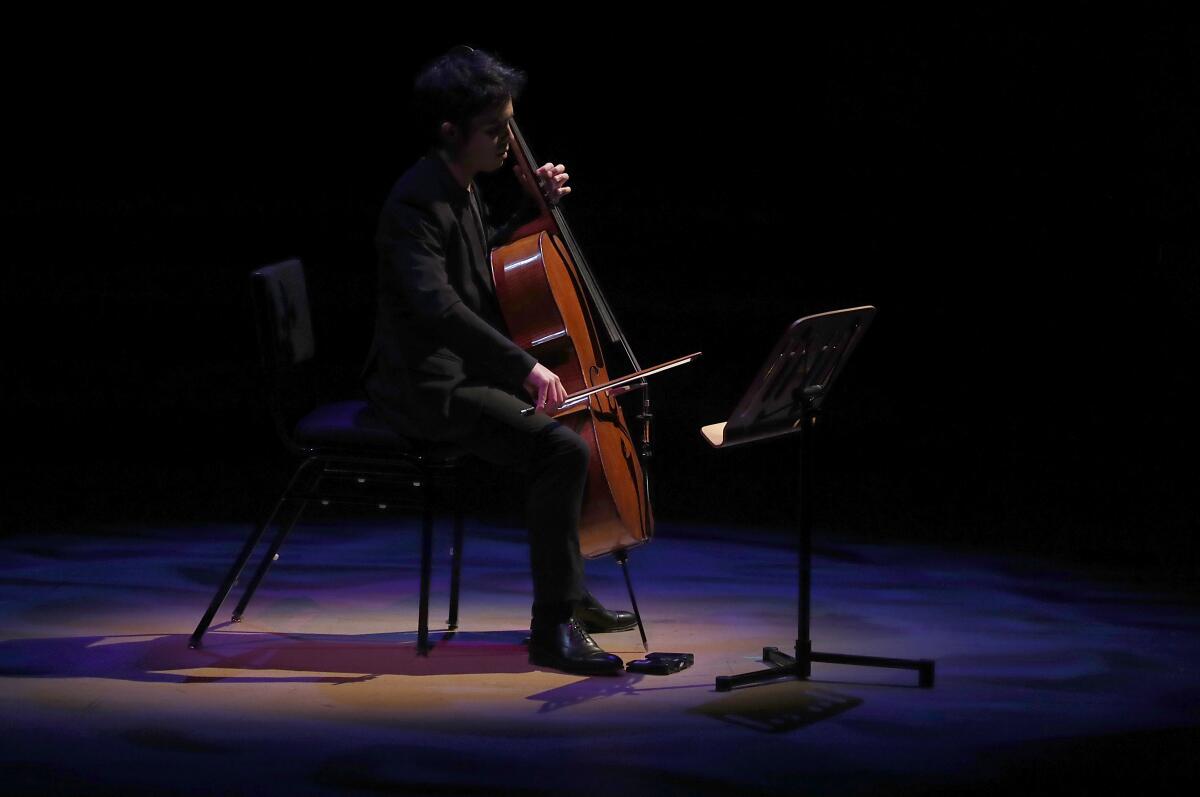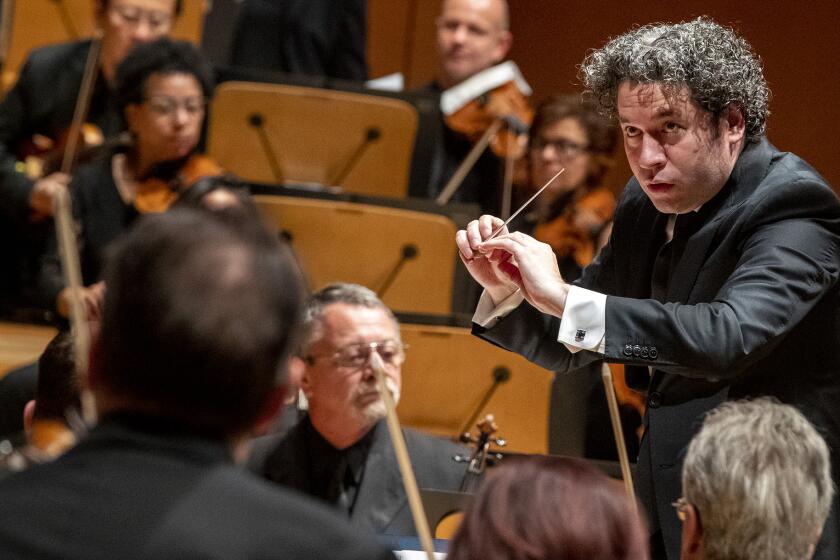Review: What does a carrot have to do with a Green Umbrella? Everything

- Share via
“We don’t just grow kale,” the Berkeley-based composer John Adams joked in his introductory remarks to the Los Angeles Green Umbrella concert Tuesday night at Walt Disney Concert Hall.
Adams didn’t note that Berkeley’s most famous crop with proven health benefits, of course, was once marijuana. At the same time, the Bay Area also grew (before it was legal in proper musical circles). Minimalism, which spread like, well, a psychedelic weed.
Adams was referring to two Berkeley teenagers he once mentored: composer Gabriella Smith, whose “Carrot Revolution” opened the program, and cellist Jay Campbell, who was the evening’s soloist and co-curator.
The program did include works by four other North American composers not from Berkeley. The pieces were either new or recent. Birth dates ranged from 1965 to 1991. Two of the five, the two youngest, were women. Most had East Coast academic pedigrees (Juilliard, Curtis, Princeton, Columbia and the like). None is based on the West Coast. Marc Sabat, who is Canadian and the oldest, lives in Berlin. Call it West Coast or not (I do), a sensibility couldn’t be mistaken.
“Carrot Revolution” set the revolutionary tone. The short string quartet was commissioned by the Barnes Foundation in Philadelphia as a musical response to an exhibition titled “The Order of Things.” Smith’s inspiration was a buzz-worthy quote, misattributed to Cézanne, that the “day will come when a single, freshly observed carrot will start a revolution.”
Freshness, here drolly exhibited by four L.A. Phil string players, is an attribute to be found in each surprising new piece I’ve heard so far from this remarkable young composer. The cello cheekily plucks away as if Bugs Bunny chomping away on the carrot. What’s up, doc, with the upper strings? They sashay through a variety of sounds, sound effects and curious tunings, the violin at one point whistling its approval.

In radically distinct ways, further fresh observation was modus operandi for the two new pieces commissioned for the program and given their world premieres. Sabat’s solo cello piece for Campbell is a slow, meticulous exploration of vibration. It might have been one second of “Carrot Revolution” elongated into 20 minutes. A single cello playing sustained chords full of penetrating harmonics took a listener inside sound. After a while, everything seemed to vibrate: the air we breathed, the seats on which we sat, the umbrellas lighted green on stands at the back of the stage. Light, sound, color are all vibrations, and, here, comfortingly, though also startlingly, so.
Sky Macklay’s “Swarm Collecting” was the big piece, written for 21 instruments, with the L.A. Phil New Music Group conducted by Adams. This time it’s meant to be the order of bee colonies. But in showing her preference for winds and brass, Macklay, who is an oboist, starts off with the wonderfully unmistakable lumbering of pairs of tubas and bass trombones. That has the effect of a tape recording of bees going about their buzzing business slowed way down to deep, unstable woof and warble.
The scoring is for all instruments in pairs. The odd player out is timpani (so that’s a pair, as well). They congeal in and out of of patterns as the piece moves into higher registers of violins, violas, oboes and clarinets. Finding order is not as important as finding purpose, these being modern city bees befuddled by environmental chaos that disables their inner GPS but not their ultimately orderly instincts.
Campbell, who is the nonchalant cellist in the unflappable JACK Quartet, offered two looks at where Minimalism has taken us since Terry Riley premiered “In C” in San Francisco 55 years.

In Eric Wubbels’ “gretchen am spinnrade” for cello and piano, Campbell and the composer angrily pounded out repeated patterns. Wubbels wrote in his program note that his starting point for the duet, composed in 2016 during the presidential election, was the spinning wheel of Schubert’s song, from which he took his title, and the wheel of karma. Together incessant repetition and incense break down disorder. The performance was staggering.
Finally, Tristan Perich’s “Formations,” written for the 2011 Shiny Toys Festival in Germany, might well also be a tribute to an early Minimalism triumph, Steve Reich’s historic concert on Nov. 7, 1970, at the Berkeley Art Museum, where the phase-patterned rhythms from four organs ricocheted off the building’s concrete walls. In Perich’s case, he uses primitive 1-bit circuit boards capable of producing but single unmodulated pitches when connected to simple loudspeaker cones. A microphone was placed in front of each of six speakers.
Phased rhythms sounding remarkably like they might have been coming from 1960s-vintage electric keyboards bounced off Disney Hall’s wood. The energy came from Campbell furiously sawing at first but later playing a low cello harmonic bass line straight out of ecstatic early West Coast Minimalism. It may not be the only way to think about the West Coast, but good vibrations as the order of things has an appropriate ring. They might even help kale grow.
Prior to L.A. Phil tour, Gustavo Dudamel revisits Andrew Norman’s mind-blowing centennial commission, “Sustain,” in a shrewd pairing with Bruckner’s Fourth Symphony.
More to Read
The biggest entertainment stories
Get our big stories about Hollywood, film, television, music, arts, culture and more right in your inbox as soon as they publish.
You may occasionally receive promotional content from the Los Angeles Times.












